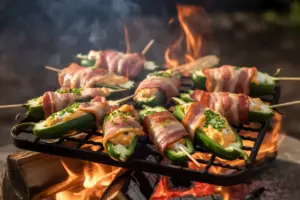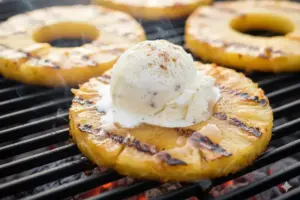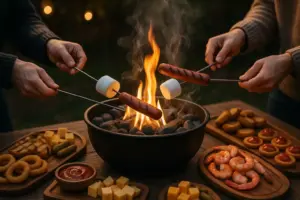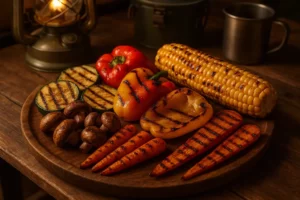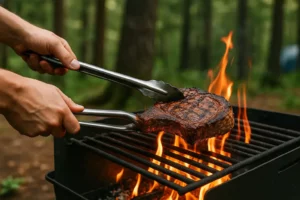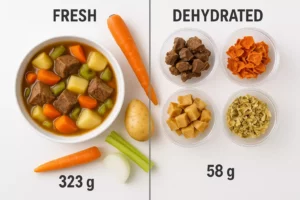Master the Art of Campfire Cooking: Your Complete Guide to Preparing the Perfect Morning Meal Outdoors
Picture this: the sun slowly rises over the treetops, birds chirp their morning songs, and the crisp outdoor air fills your lungs. Nothing completes this magical camping moment quite like the sizzle of bacon and the aroma of fresh coffee brewing over an open flame. Campfire cooking transforms an ordinary breakfast into an unforgettable outdoor experience that connects you with nature and creates lasting memories with family and friends.
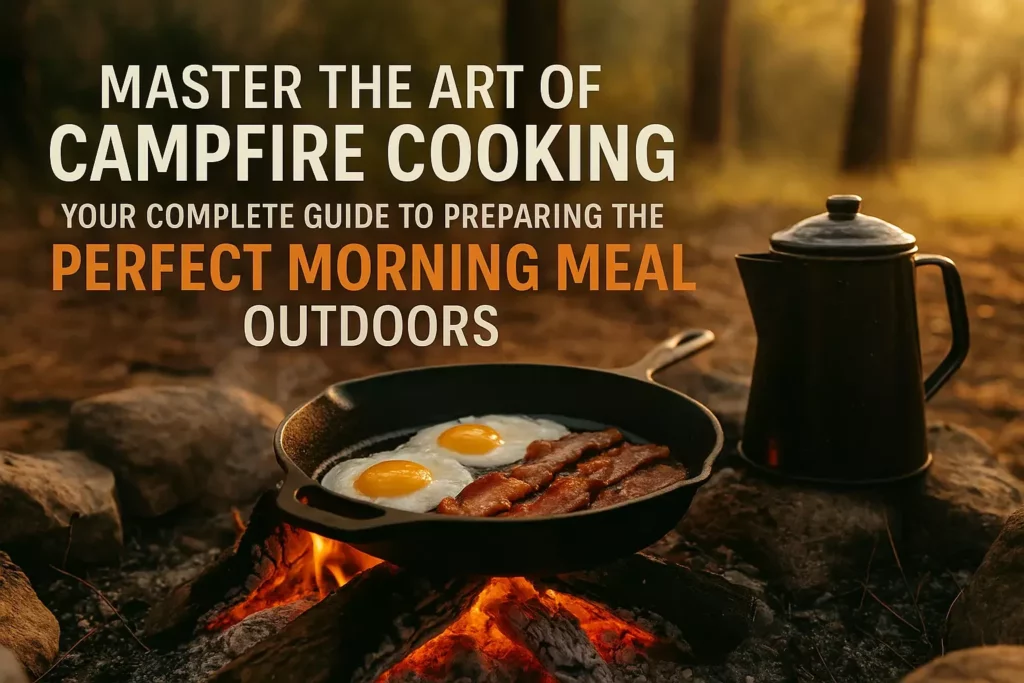
Key Takeaways
- Fire preparation is crucial – Build a proper cooking fire with hot coals 30-45 minutes before cooking
- Essential equipment includes cast iron cookware, long-handled utensils, and heat-resistant gloves
- Safety first – Always maintain a well-stocked first aid kit and keep water nearby for emergencies
- Plan your menu – Choose simple, hearty breakfast foods that cook well over open flames
- Practice makes perfect – Start with basic recipes and gradually advance to more complex meals
Essential Equipment for Campfire Breakfast Cooking 🔥
Must-Have Cookware
Cast iron equipment forms the backbone of successful campfire cooking. These heavy-duty pieces distribute heat evenly and can withstand the intense temperatures of open flames:
- Cast iron skillet (10-12 inches) – Perfect for eggs, bacon, and pancakes
- Dutch oven – Ideal for biscuits, hash browns, and one-pot meals
- Coffee pot or percolator – Essential for that morning caffeine fix
- Grill grate – Allows for direct grilling over coals
Safety and Utility Tools
| Tool | Purpose | Safety Benefit |
|---|---|---|
| Long-handled spatula | Flipping food | Keeps hands away from heat |
| Heat-resistant gloves | Handling hot cookware | Prevents burns |
| Tongs (12+ inches) | Moving food and coals | Safe coal management |
| Fire poker | Adjusting logs and coals | Maintains safe distance |
| Water bucket | Emergency fire control | Critical safety measure |
Food Storage and Prep
Proper food storage becomes even more critical when camping with kids or in areas with wildlife. Invest in:
- Sealed coolers with plenty of ice
- Airtight containers for dry goods
- Sharp knives and cutting boards
- Aluminum foil for wrapping and easy cleanup
Building the Perfect Cooking Fire 🌟
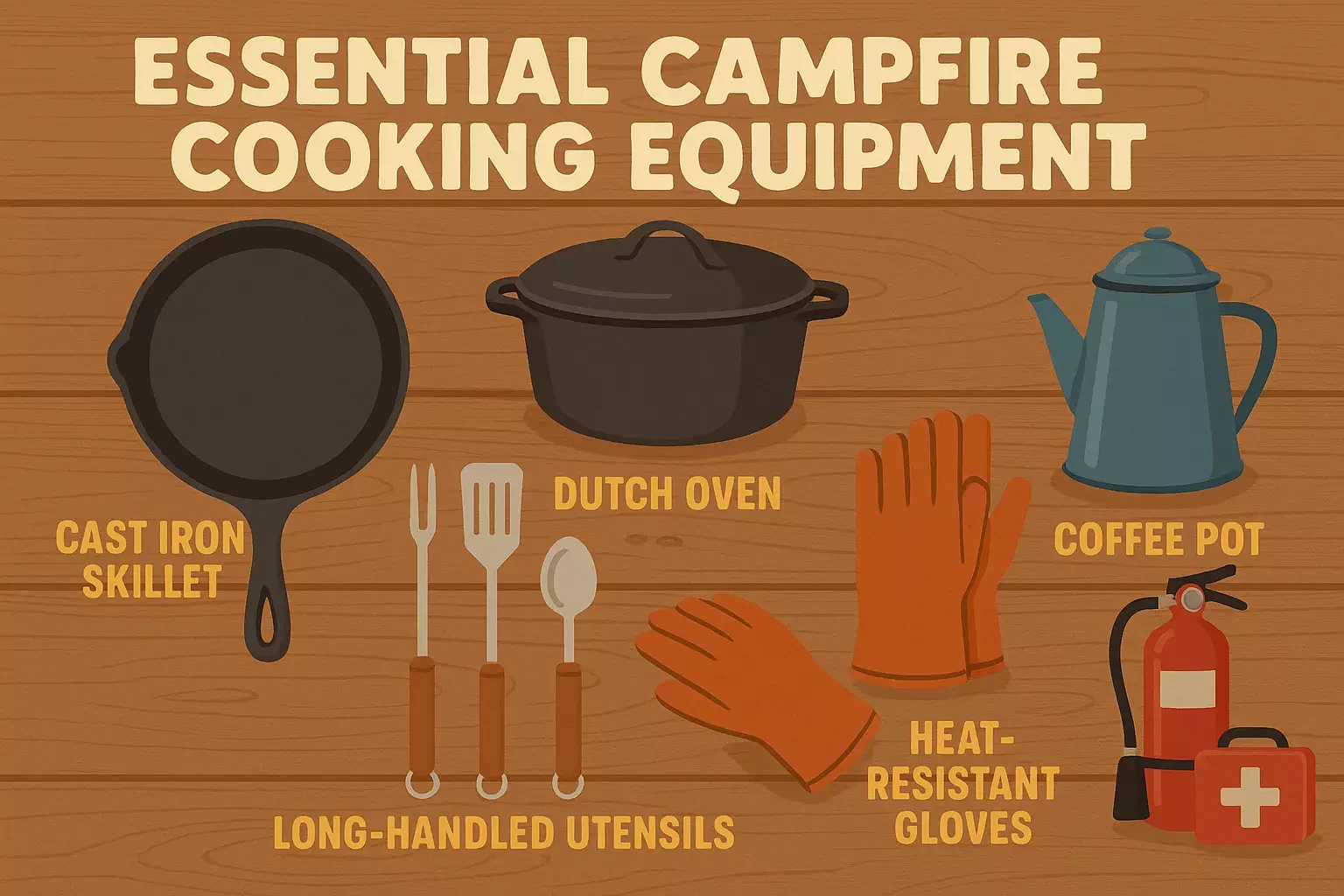
Fire Foundation
Creating the ideal cooking fire requires patience and technique. Start by gathering three types of wood:
- Tinder – Dry grass, paper, birch bark
- Kindling – Pencil-thick to thumb-thick dry wood
- Fuel wood – Wrist-thick to arm-thick seasoned hardwood
The Cooking Coal Method
The secret to excellent campfire cooking lies in cooking over coals, not flames. Follow these steps:
- Build a standard campfire using the teepee method
- Let the fire burn for 30-45 minutes until you have a good bed of hot coals
- Spread coals evenly using your fire poker
- Test heat levels by holding your hand 6 inches above the coals:
- 2-3 seconds = High heat (perfect for searing)
- 4-5 seconds = Medium heat (ideal for most cooking)
- 6-8 seconds = Low heat (great for gentle cooking)
Pro Tip: Create different heat zones by varying coal thickness. Thick coal beds provide high heat, while thin layers offer gentler cooking temperatures.
Classic Campfire Breakfast Recipes
1. Perfect Campfire Scrambled Eggs 🥚
Ingredients:
- 8-10 fresh eggs
- 1/4 cup milk or cream
- Salt and pepper to taste
- 2 tablespoons butter
- Optional: cheese, herbs, vegetables
Instructions:
- Heat cast iron skillet over medium coals
- Crack eggs into a bowl and whisk with milk, salt, and pepper
- Add butter to the hot skillet
- Pour in egg mixture and let sit for 30 seconds
- Gently stir with spatula, pushing eggs from edges to center
- Continue stirring every 30 seconds until eggs are creamy and set
- Remove from heat while slightly underdone (they’ll continue cooking)
2. Crispy Campfire Bacon
The key to perfect bacon lies in starting with a cold pan and cooking slowly:
- Place bacon strips in cold cast iron skillet
- Position skillet over low to medium coals
- Cook for 4-5 minutes without moving
- Flip bacon and cook another 3-4 minutes
- Continue flipping every 2-3 minutes until desired crispness
- Remove to paper towels and save grease for other cooking
3. Fluffy Campfire Pancakes
Dry Mix (prepare at home):
- 2 cups all-purpose flour
- 2 tablespoons sugar
- 2 teaspoons baking powder
- 1 teaspoon salt
At Camp, Add:
- 1 3/4 cups milk
- 2 eggs
- 1/4 cup melted butter
Cooking Method:
- Mix wet and dry ingredients until just combined (lumps are okay!)
- Heat skillet over medium coals and add butter
- Pour 1/4 cup batter per pancake
- Cook until bubbles form on surface (2-3 minutes)
- Flip once and cook until golden brown
Advanced Campfire Cooking Techniques
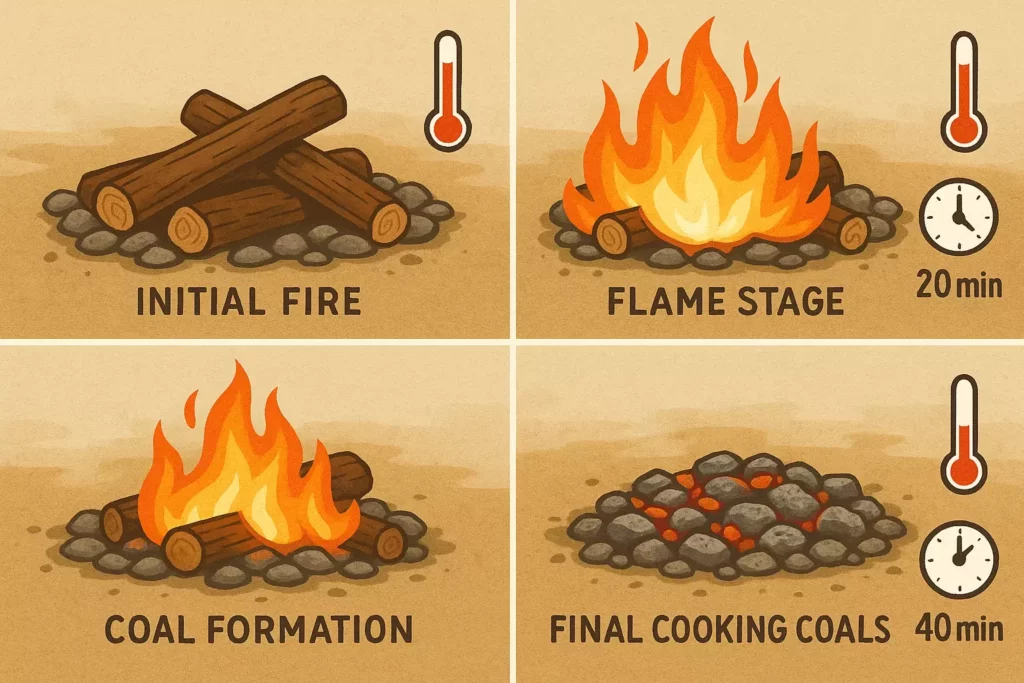
Dutch Oven Biscuits
Nothing beats fresh-baked biscuits on a camping morning. Using the coal-on-top method:
- Prepare biscuit dough and place in greased Dutch oven
- Place oven on bed of coals (use fewer coals than on top)
- Put lid on and place hot coals on top
- Rule of thumb: Use diameter + 3 coals on bottom, diameter + 6 coals on top
- Bake for 12-15 minutes, rotating oven and lid every 5 minutes
Breakfast Hash in Foil Packets
This technique works perfectly when camping with kids as everyone can customize their packet:
Ingredients per packet:
- 1 cup diced potatoes
- 1/4 cup diced onions
- 2-3 strips cooked bacon, chopped
- 1 egg
- Salt, pepper, and seasonings
- 1 tablespoon oil or butter
Assembly:
- Place ingredients on large piece of heavy-duty foil
- Fold foil into sealed packet
- Place on medium coals for 15-20 minutes
- Flip once halfway through cooking
Safety Considerations and Best Practices ⚠️
Fire Safety Protocols
Campfire cooking requires constant vigilance. Always maintain these safety practices:
- Never leave a fire unattended while cooking
- Keep a well-stocked first aid kit easily accessible
- Maintain a bucket of water or sand nearby for emergencies
- Clear the area around your fire of flammable materials
- Check local fire restrictions before starting any fire
Food Safety in the Outdoors
Outdoor cooking presents unique food safety challenges:
- Keep cold foods cold – Maintain cooler temperatures below 40°F
- Cook to proper temperatures – Use a meat thermometer when possible
- Avoid cross-contamination – Use separate utensils for raw and cooked foods
- When in doubt, throw it out – Don’t risk foodborne illness in the wilderness
Weather Considerations
Wind, rain, and temperature all affect campfire cooking success:
- Windy conditions – Create windbreaks and use heavier cookware
- Rain – Cook under tarps or in covered areas when possible
- Cold weather – Plan for longer cooking times and have extra appropriate clothing
Meal Planning and Preparation Tips
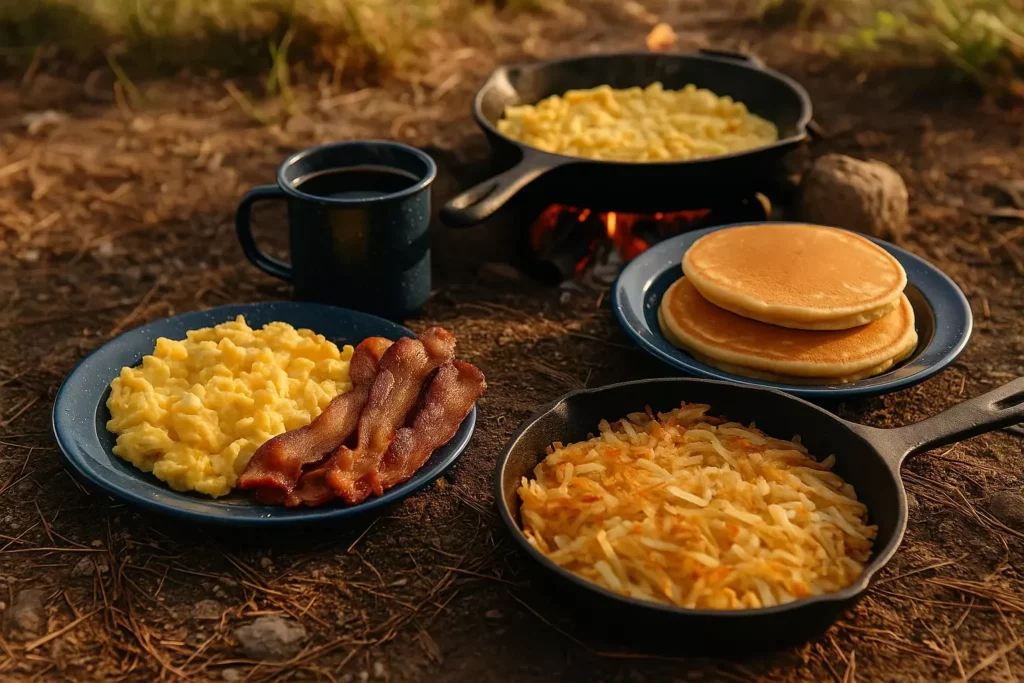
Pre-Trip Preparation
Smart planning makes campfire cooking much easier:
- Prep ingredients at home – Chop vegetables, mix dry ingredients
- Pre-cook some items – Par-cook potatoes, pre-cook bacon
- Pack strategically – Learn how to pack your backpack efficiently
- Create a menu plan – Know exactly what you’ll cook each morning
Essential Ingredients to Pack
Proteins:
- Bacon (keeps well and adds flavor to everything)
- Eggs (versatile and filling)
- Sausage links or patties
- Canadian bacon or ham
Starches:
- Pancake mix
- Bread for toast
- Potatoes for hash browns
- Oatmeal for quick options
Flavor Enhancers:
- Salt and pepper
- Garlic powder
- Hot sauce
- Maple syrup
- Butter
Cleanup and Leave No Trace Principles
Proper Cleanup Procedures
Responsible campfire cooking includes thorough cleanup:
- Let cookware cool completely before cleaning
- Scrape food scraps into trash bags (never leave in nature)
- Use biodegradable soap sparingly and dispose of greywater properly
- Pack out all trash including food scraps and packaging
Fire Extinguishing
Always completely extinguish your cooking fire:
- Allow wood to burn completely to ash when possible
- Pour water over the fire, stirring ashes with a shovel
- Pour more water and stir again
- Check for any remaining heat with the back of your hand
- Only leave when the fire is completely cold
Troubleshooting Common Campfire Cooking Problems
Temperature Control Issues
Problem: Food burning on the outside, raw inside
Solution: Move cookware to cooler coals or raise it higher above the heat
Problem: Food cooking too slowly
Solution: Add more coals or move to hotter section of fire
Equipment Challenges
Problem: Food sticking to cast iron
Solution: Ensure proper seasoning and adequate oil/butter
Problem: Uneven cooking
Solution: Rotate cookware regularly and maintain even coal bed
Building Campfire Cooking Skills Over Time
Start Simple, Build Complexity
Begin your campfire cooking journey with basic recipes and gradually advance:
Beginner Level:
- Scrambled eggs
- Bacon
- Toast over the fire
- Instant oatmeal
Intermediate Level:
- Pancakes from scratch
- Hash browns
- Coffee in a percolator
- Foil packet meals
Advanced Level:
- Dutch oven biscuits
- Breakfast casseroles
- Homemade sausage gravy
- Multi-course breakfast spreads
Learning from Experience
Each camping trip provides opportunities to refine your skills. Keep a camping journal noting:
- What recipes worked well
- Cooking times and temperatures
- Equipment that proved most useful
- Areas for improvement
Consider practicing these techniques in your backyard before heading out on major camping adventures, especially when planning family camping activities.
Timer & Temperature Guide for Perfect Outdoor Breakfast
Cooking Timer
Conclusion
Mastering campfire cooking transforms your outdoor adventures from simple camping trips into memorable culinary experiences. The combination of proper preparation, essential equipment, and practiced techniques creates the foundation for consistently delicious morning meals in the wilderness.
Remember that safety always comes first – maintain your fire responsibly, keep emergency supplies accessible, and never compromise on food safety practices. Start with simple recipes and gradually build your skills as you gain confidence over the flames.
Your next steps:
- Practice at home – Try these techniques in your backyard before your next camping trip
- Gather essential equipment – Invest in quality cast iron cookware and safety tools
- Plan your menu – Choose simple, hearty breakfast foods for your first attempts
- Start small – Begin with basic recipes and build complexity over time
Whether you’re planning a solo adventure or setting up camp for the whole family, these campfire cooking skills will enhance every outdoor experience. The satisfaction of preparing a delicious breakfast over an open fire, surrounded by nature’s beauty, creates memories that last far beyond the final ember.
Take time to perfect these techniques, prioritize safety, and most importantly, enjoy the process. Some of life’s best moments happen around a campfire with good food, great company, and the endless possibilities that each new day in the outdoors brings.

